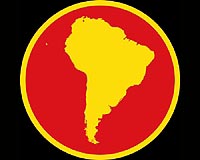| . |  |
. |
Baghdad (UPI) Apr 9, 2010 America's generals are wrestling with the herculean task of moving the sinews of war -- 1 million tons of equipment that includes 43,000 vehicles, 6000-plus helicopters, 120,000 containers and 34,000 tons of ammunition -- out of Iraq under the U.S. withdrawal. Much of the equipment is being shipped to Afghanistan, where U.S. forces are being built up to crush the Taliban and al-Qaida, or pre-positioned at U.S. bases in the Gulf for future operations in region. The rest is headed for the United States in the military's largest logistics operation since World War II. The withdrawal of U.S. military forces, with all combat forces scheduled to be out by the end of August, will for all intents and purposes mark the end of an increasingly unpopular war. For the moment, the final timetable for the removal of much of the weapons, equipment and stores depends on when a new Iraqi government can be formed following the March 7 parliamentary elections. The two leading coalitions are pretty much neck-and-neck, but don't have enough votes to rule on their own. Weeks, and possibly, months of potentially disruptive horse-trading probably lie ahead before a new administration can emerge. The withdrawal began in June 2009 and Lt. Gen. William Webster, commander of the U.S. Third Army, currently headquartered in Kuwait, says the operation is about 35 percent completed. "This is the largest operation that we've been able to determine since the buildup for World War II," he said. Once Washington is assured that no major violence is likely to ensue, the military says that the last phase of the massive evacuation operation, optimistically dubbed Operation Clean Sweep, can commence. No one wants to repeat the foul-ups that marred the U.S. withdrawal from Iraq after the 1990-91 Gulf War in which Kuwait was liberated from Saddam's invading army. Then a lot of equipment was lost through inept management and the evacuation was plagued by delays. "We've learned a lot since then," declared Brig. Gen Paul Wentz, head of the U.S. army's 13th Sustainment Command, who will coordinate this massive undertaking. "A lot of the bad things that came out of the first Gulf War have been fixed. We've introduced a lot of technology." Once the word comes down, a huge network of trucks, aircraft and ships will start moving 45,000 soldiers and more than 1 million tons of equipment scattered around 290 bases, from supersized bulldozers to coffee machines. The operation is headquartered in the huge Balad air base north of Baghdad. Much of the heavy lifting has not yet started, but armor and the ungainly trucks known as Mine Resistant Ambush Protected armored vehicles, designed to counter the deadly roadside bombs favored by Iraqi insurgents, are already gone south to Kuwait. The main highway for these convoys is the four-lane blacktop built by Saddam down the spine of the country to facilitate swift troop movements, and tanks of transporters in particular, from one front to another during the 1980-88 war with Iran. The Americans call it Route Tampa. They used it to punch north to Baghdad from Kuwait in March 2003. From Kuwait, equipment for the buildup in Afghanistan is shipped eastward through the Gulf to Karachi, Pakistan, then overland again. Some containers will be funneled through the port of Umm Qasr in southern Iraq. Other equipment, largely destined for the Europe or the United States, will be transported across Iraq's Western Desert to Jordan's only port, Aqaba on the Red Sea, for shipment. One of the busiest routes out of Iraq is north through Turkey to link up with a road network crossing Central Asia to the east, which was opened up in 2009 for U.S. supplies going to Afghanistan as an alternative to the more dangerous route through Pakistan. One consignment that went by this route recently was 80 shipping containers carrying everything for a forward operating base -- "a FOB in a box" -- that was assembled in Afghanistan. The construction materials, tents, showers and other component were taken by truck convoy from Balad through Turkey, east through Georgia and Azerbaijan, then shipped across the Caspian Sea to Kazakhstan. From there they were carried south by rail to Uzbekistan and finally trucked into northern Afghanistan -- a trip of 2,300 miles that crossed seven countries and took two-and-a-half months.
Share This Article With Planet Earth
Related Links Learn about the Superpowers of the 21st Century at SpaceWar.com Learn about nuclear weapons doctrine and defense at SpaceWar.com
 China spells out Latin America strategy
China spells out Latin America strategyRio De Janeiro (UPI) Apr 9, 2010 China has set out clear targets to achieve economic, trade and political objectives from the visit of President Hu Jintao to Brazil, Venezuela and Chile, beginning next week. Chinese officials indicated Beijing was seeking a comprehensive development of China-Latin America relations, one that would encompass all aspects of bilateral exchanges. China has already scored successes ... read more |
|
| The content herein, unless otherwise known to be public domain, are Copyright 1995-2010 - SpaceDaily. AFP and UPI Wire Stories are copyright Agence France-Presse and United Press International. ESA Portal Reports are copyright European Space Agency. All NASA sourced material is public domain. Additional copyrights may apply in whole or part to other bona fide parties. Advertising does not imply endorsement,agreement or approval of any opinions, statements or information provided by SpaceDaily on any Web page published or hosted by SpaceDaily. Privacy Statement |